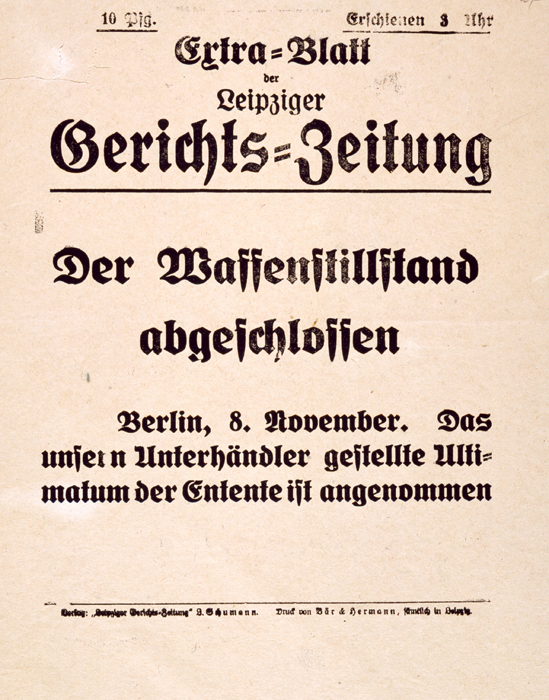













INTRODUCTION | DOCUMENTS | IMAGES | MAPS | EDITOR
|
On September 29, 1918, after the failed spring offensive of 1918, the Supreme Army Command called for the conclusion of a ceasefire. On October 3, 1918, the German government sent a request to President Woodrow Wilson, whose Fourteen Points of January 1918 had appeared favorable to Germany. Wilson, however, now made demands verging on unconditional surrender. It was not until November 8, 1918, that the German delegation received permission to travel to France to sign the armistice. Matthias Erzberger (1875-1921) led the delegation that signed the ceasefire on November 11 in a train car in Compiègne. In addition to demanding the end to all hostilities, the ceasefire of November 11, 1918, called for a withdrawal from all occupied territories; the surrender of all weapons, artillery, and ships; the withdrawal of troops from the left bank of the Rhine, and from the garrison cities of Cologne, Mainz, and Koblenz; and the annulment of the Treaty of Brest-Litovsk, which Germany and Russia had concluded on March 3, 1918. The following supplement to the Leipzig Court Journal reads: "Armistice Accepted. Berlin, 8. November. The Entente ultimatum presented by negotiators is accepted."
© Deutsches Historisches Museum |
 print version
print version return to image list
return to image list previous image
previous image
